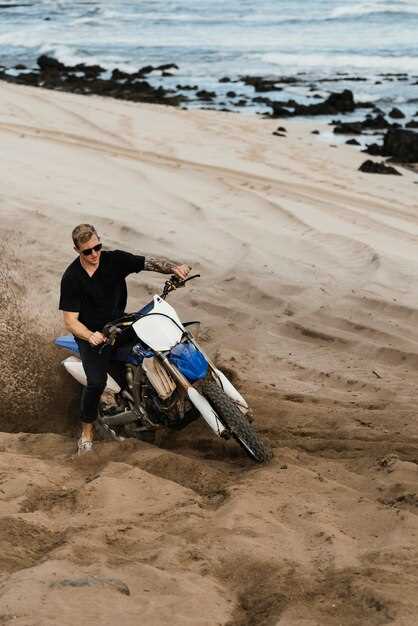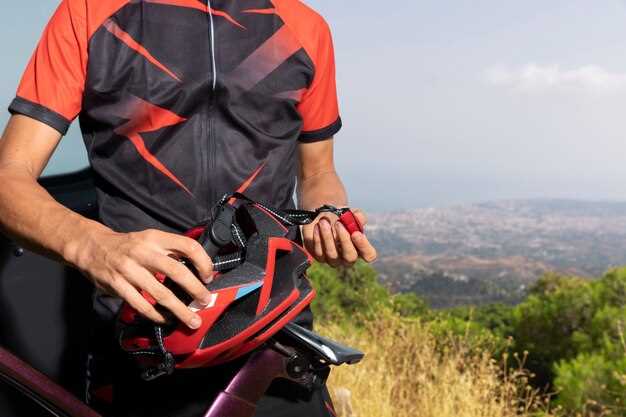

Embarking on off-road adventures requires more than just a sense of adventure; it demands a motorcycle that is specifically tailored for rugged terrains. While street bikes may excel on paved roads, transforming your motorcycle for off-road use opens up a world of possibilities. This article delves into essential modifications that can enhance your bike’s performance and ensure a safer, more enjoyable riding experience.
First and foremost, choosing the right tires is crucial. Off-road tires are designed with deeper treads and more flexible sidewalls, providing the necessary grip on loose and uneven surfaces. Investing in quality tires can dramatically improve your motorcycle’s handling and stability when navigating rocky trails or muddy paths.
Another critical aspect to consider is suspension modification. Off-road conditions often demand a more durable suspension system to absorb shocks from bumps and descents. Upgrading to a long-travel suspension can enhance your bike’s ability to tackle obstacles while maintaining comfort and control. This modification not only improves your ride quality but also boosts your confidence in challenging environments.
Lastly, protection gear is vital when modifying your motorcycle for off-road adventures. Skid plates, handguards, and engine guards are all necessary additions that shield your bike from potential damage due to falls or obstacles. These protective modifications can save you costly repairs and enhance the longevity of your motorcycle.
By implementing these critical modifications, you can transform your motorcycle into an adept off-road machine ready to conquer any challenge your adventure might throw at you. Adventure awaits–let’s prepare your bike for the journey!
Choosing the Right Tires for Diverse Terrain

Selecting the appropriate tires for your motorcycle is crucial when preparing for off-road adventures. Different terrains require specific tread patterns, rubber compounds, and tire sizes to ensure optimal performance and safety.
1. Understand Terrain Types: Off-road environments vary significantly. Common terrains include mud, sand, rock, and hard-packed soil. Each surface interacts differently with tire types, making it essential to understand where you will be riding.
2. Tread Pattern: The tread pattern of a tire directly affects grip and stability. For muddy or loose surfaces, opt for tires with deep, aggressive tread patterns that can dig in and provide traction. Conversely, a more streamlined pattern is suitable for hard-packed terrains where less resistance is needed.
3. Tire Width and Profile: Wider tires generally offer better flotation on soft surfaces, such as sand and mud. However, narrower tires can provide better handling and control on rocky or uneven ground. Consider your riding style and the typical conditions you encounter to determine the best balance.
4. Rubber Composition: The rubber used in tires varies in hardness. Softer compounds offer increased grip on uneven surfaces but wear out faster. Harder compounds last longer on rugged terrains but may sacrifice traction. Assess the trade-offs based on your riding frequency and terrain type.
5. Versatility: If you plan to ride across multiple terrains, consider a dual-sport tire designed for versatility. These tires typically have a balanced tread design that performs reasonably well in various conditions, making them an excellent choice for mixed-use riders.
6. Pressure Matters: Tire pressure significantly affects performance. Lowering pressure increases the contact patch with the ground, improving traction in soft terrains. However, ensure you don’t go too low, as it may lead to pinch flats or instability.
In summary, choosing the right tires for off-road adventures requires careful consideration of terrain types, tread patterns, tire width, rubber composition, and versatility. Making the appropriate selection can enhance your riding experience, providing safety and confidence on diverse surfaces.
Upgrading Suspension for Enhanced Stability and Comfort
When preparing your motorcycle for off-road adventures, one of the most crucial upgrades is the suspension system. A well-functioning suspension enhances tire contact with the ground, providing greater stability and comfort during rough rides. Standard suspension often lacks the necessary travel and adjustability required for challenging terrains.
Start by considering the type of terrain you will encounter. For rocky trails, high-performance shock absorbers with increased travel can significantly improve your bike’s capability to absorb impacts. Look for adjustable shocks that allow you to fine-tune the compression and rebound settings based on your weight and riding style.
Upgrading to a more robust front fork is equally important. Forks with adjustable preload and damping settings can provide better handling and responsiveness, which are essential for navigating uneven surfaces. Additionally, replacing stock springs with higher-rated ones tailored to your riding weight can prevent bottoming out during hard landings.
Don’t overlook the importance of the rear suspension. Installing a heavy-duty rear shock that offers both compression and rebound adjustments can enhance the overall riding experience. A progressive spring can help in accommodating varying loads, ensuring consistent performance regardless of the conditions.
It’s also beneficial to evaluate the geometry of your motorcycle after suspension upgrades. Alterations in ride height can affect handling; thus, adjustments in the front and rear can maintain balance and maneuverability. Consider consulting with professionals or experienced riders to find the best setup for your specific off-road needs.
Lastly, regular maintenance of the suspension components is vital for sustained performance. Keeping seals clean, fluids fresh, and ensuring proper adjustments can prolong the life of your suspension system and enhance your riding experience on any off-road adventure.
Installing Protective Gear and Accessories for Safety

When venturing into off-road adventures, safety should be your top priority. Installing the right protective gear and accessories can significantly reduce the risk of injury. Below are essential items to consider for your motorcycle modifications.
- Helmet: Choose a DOT or ECE certified helmet specifically designed for off-road riding. Look for features like an extended visor and ventilation to enhance comfort.
- Goggles: Invest in quality goggles that provide UV protection and anti-fog features. A good fit is crucial to avoid dust and debris while riding.
- Armor: Body armor, including chest protectors, elbow guards, and knee guards, provides an extra layer of protection against impacts. Look for lightweight yet durable materials.
- Gloves: Off-road gloves should have reinforced knuckles and palms for better grip and protection. Opt for breathable and flexible materials to maintain dexterity.
- Jacket and Pants: Durable, abrasion-resistant fabrics are critical for off-road jackets and pants. Look for models with built-in armor and ventilation to ensure safety and comfort.
- Boots: Protective boots should cover the ankles and provide support. Make sure they have adequate grip and protection against impacts, along with waterproof capabilities.
- First-Aid Kit: Carrying a well-equipped first-aid kit is essential for handling minor injuries on the trail. Ensure it contains bandages, antiseptic wipes, and other essentials.
- Accessory Lighting: Installing additional LED lights can improve visibility during low-light conditions. Consider handlebar-mounted or helmet lights for maximum coverage.
- GPS Tracker: Equipping your motorcycle with a GPS tracker enhances safety by allowing you to navigate unknown terrains and even track your location in case of emergencies.
- Communication Devices: Install a communication system that allows you to stay in touch with fellow riders. This can be crucial for coordinating group rides and ensuring everyone’s safety.
By prioritizing these protective gear and accessories, you can significantly enhance your safety while exploring off-road trails. Always ensure that all pieces fit properly and are in good condition before embarking on your adventure.






